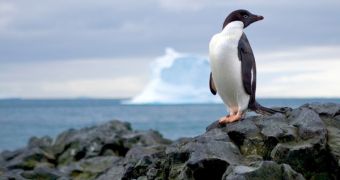The United States Fish and Wildlife Service (FWS) announced that it placed six species of penguins under the protection of the 1979 Endangered Species Act, with another one being classified as threatened. Environmentalists saluted the decision, but criticized the Bush administration for not including three other species, among which the Emperor Penguin, now indigenous to only 47 colonies in Antarctica.
All penguin species that now fall under the protection of the law live in Antarctica, South Africa, Peru, Argentina or New Zealand, so the American law does not have a direct effect on them. However, in terms of diplomacy, America can now easily introduce safeguards in all agreements it establishes with these countries, so as to force their hand to protect the penguins on their territories, from such threats as habitat reduction, pollution contamination and more.
"There are certainly issues with those species, but we did not believe at this time that the populations were reduced or that there were significant threats to lead us to make a determination that they are threatened with extinction," Kenneth Stansell, the deputy director of the Fish and Wildlife Service, said, following the announcement of the new decision, referring to the three species that were not included in the measure.
There are currently some 16 to 19 penguin species in the world. Their number varies because scientists have not yet come to an agreement as to whether some types can be classified as subspecies, or are different species altogether. Most of these species are currently facing serious threats to their livelihood, especially considering the fact that some of them depend entirely on sea ice to survive, and that sea ice levels everywhere are critical.
"Penguin populations are in jeopardy, and we can't afford to further delay protections," warned Center for Biological Diversity ocean program director, Brendan Cummings.

 14 DAY TRIAL //
14 DAY TRIAL //